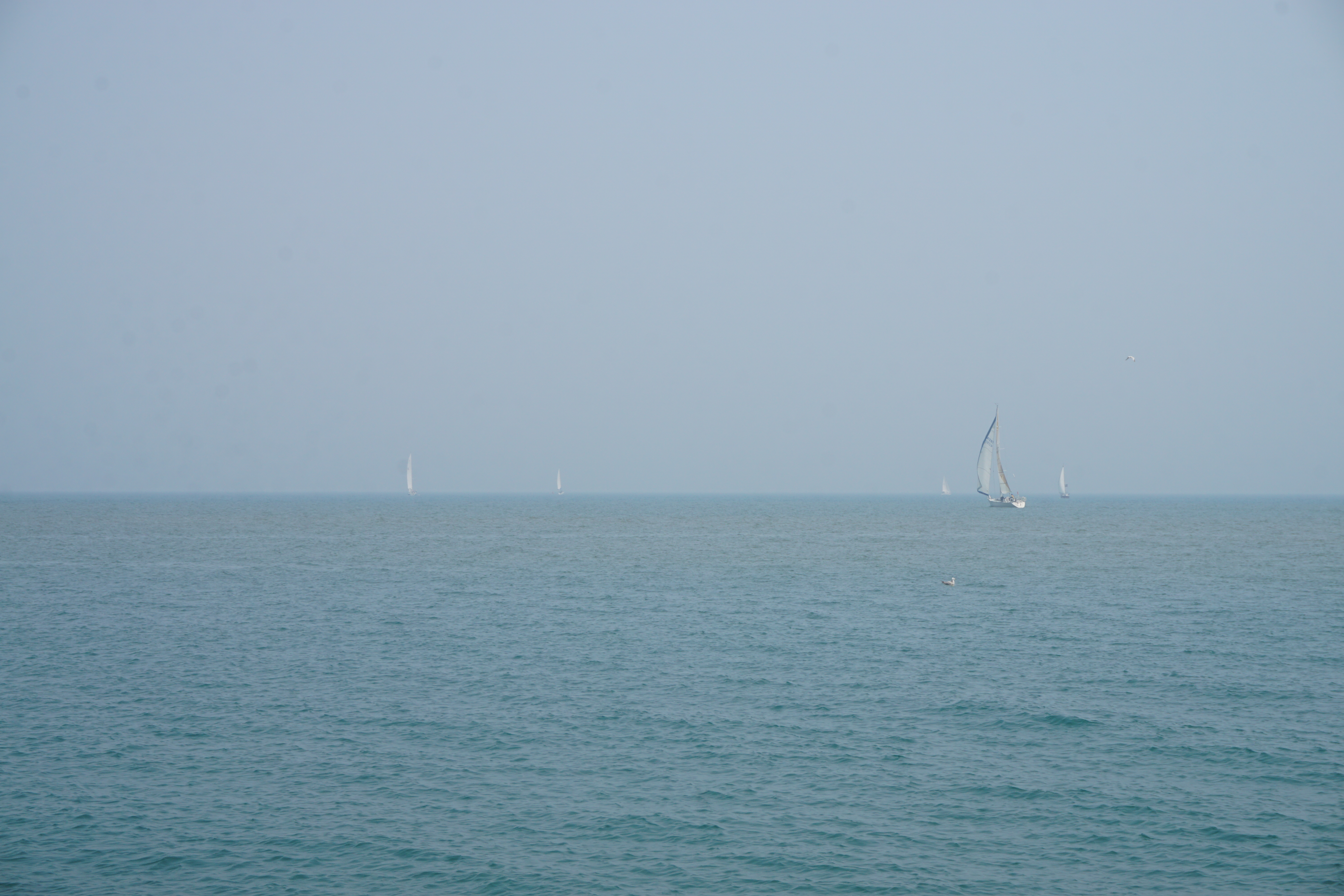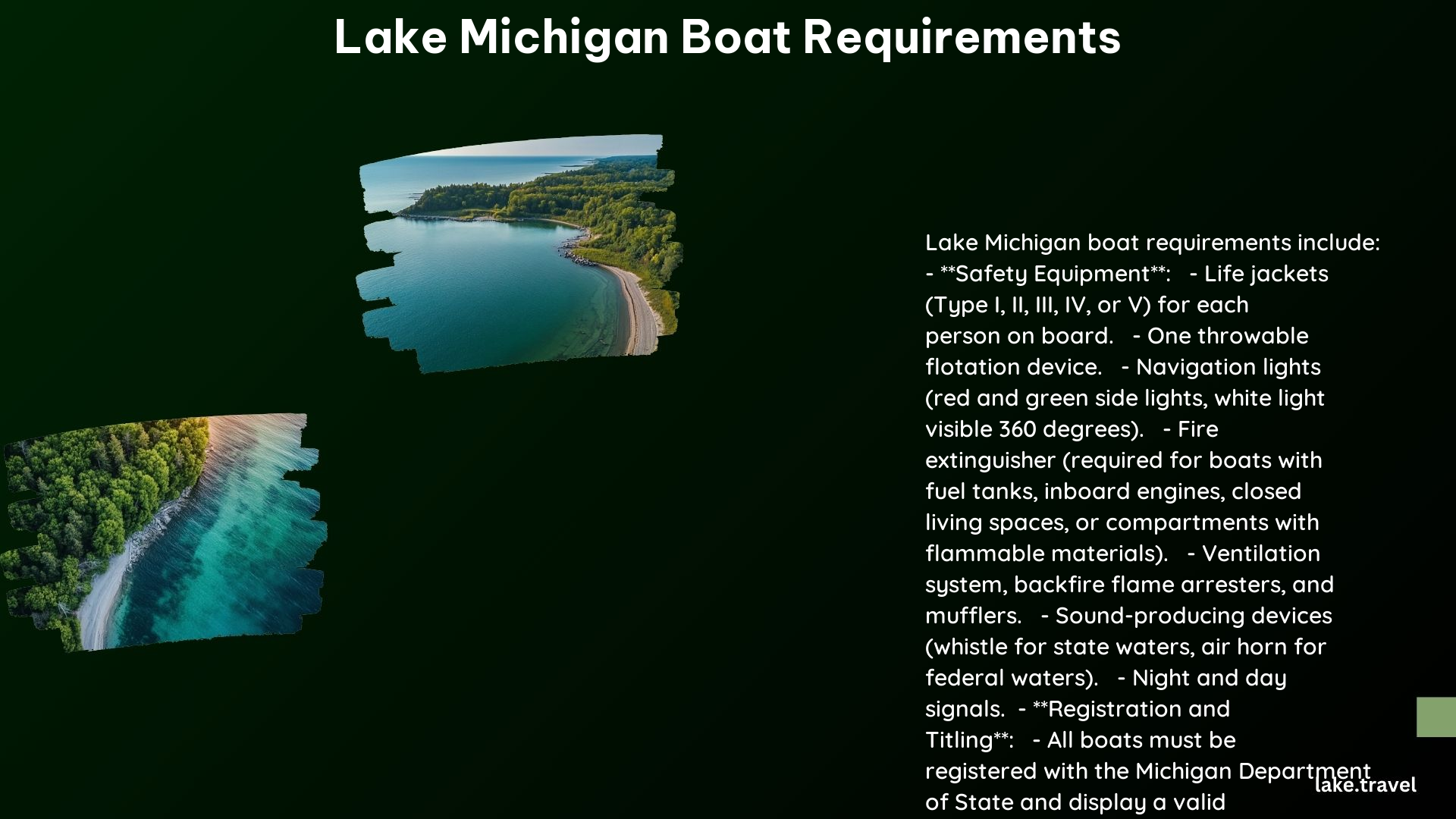Lake Michigan boat requirements encompass various regulations and safety measures to ensure a safe and enjoyable boating experience. Whether you’re a seasoned sailor or a first-time boater, understanding these requirements is crucial for your safety and the well-being of others on the water.
Safety Equipment

Personal Flotation Devices (PFDs) / Life Jackets
- Type I, Type II, Type III, Type IV, or Type V PFDs are required on board.
- Children under 6 years old must wear a Type I or Type II PFD at all times when in an open deck area.
- Federal law requires children 12 years old and younger to wear life jackets while on board a boat underway on Lake Michigan.
Navigation Lights
- Red and green side lights must be visible from one mile away.
- A masthead light and stern light are required for powered vessels 26 feet or longer, with the masthead light visible from two miles away.
Fire Extinguishers
- Required for boats with permanently installed fuel tanks, inboard engines, closed living spaces, or compartments with flammable materials.
Ventilation System
- Ensure proper ventilation to prevent carbon dioxide poisoning.
Sound-Producing Devices
- Whistle or air horn is required for signaling.
Visual Distress Signals (Flares)
- Three current, non-expired devices are required on board for pyrotechnic flares.
Registration and Titling

- All watercraft, unless exempt, must be registered with the Michigan Department of State and display a registration decal. Registrations expire on March 31.
Other Regulations
Speed Limits
- Slow-no-wake speed within 100 feet of shorelines, moored and anchored watercraft, piers, people, rafts, swimming areas, and swimmers.
Towing of Persons
- No water skiing between one hour after sunset and one hour prior to sunrise.
Distance Between Persons Being Towed and Other Objects
- Maintain a distance of 100 feet from docks, rafts, buoyed or occupied bathing areas, or vessels moored or at anchor.
Counter-Clockwise Operations
- Operate vessels in a counter-clockwise direction when reasonably possible.
Noise Level of Boats
- Motorboats must have mufflers or an underwater exhaust system to limit sound levels to 90 dB.
Children Operating Motorboats
- Children under 12 years old must have a boating safety certificate and be under direct supervision.
Liquor and Controlled Substances
- Operating a vessel while under the influence of liquor or controlled substances is prohibited.
Additional Tips
- Wear a Life Jacket: Accidents can happen, so always wear a life jacket to ensure safety.
- Boat Sober: Avoid operating a vessel while under the influence of alcohol.
- Check Your Boat: Ensure all safety equipment is on board and in good working condition.
- Have a Float Plan: Inform someone about your trip details, including route, duration, and return time.
- Stay Alert: Watch for other boats, swimmers, and objects in the water, especially at night and in crowded areas.
By familiarizing yourself with the Lake Michigan boat requirements and following these guidelines, you can ensure a safe and enjoyable boating experience on the beautiful waters of Lake Michigan.
References
- https://www.michigan.gov/dnr/things-to-do/boating/rules-and-regs
- https://www.greatmiattorneys.com/personal-injury/what-boating-safety-equipment-is-required-while-on-michigan-lakes/
- https://www.michigan.gov/dnr/things-to-do/boating/safety
- https://mymlsa.org/government-and-legal-issues/michigan-marine-law-boater-safety/
- https://www.wisducks.org/lake-michigan-boat-requirements/
